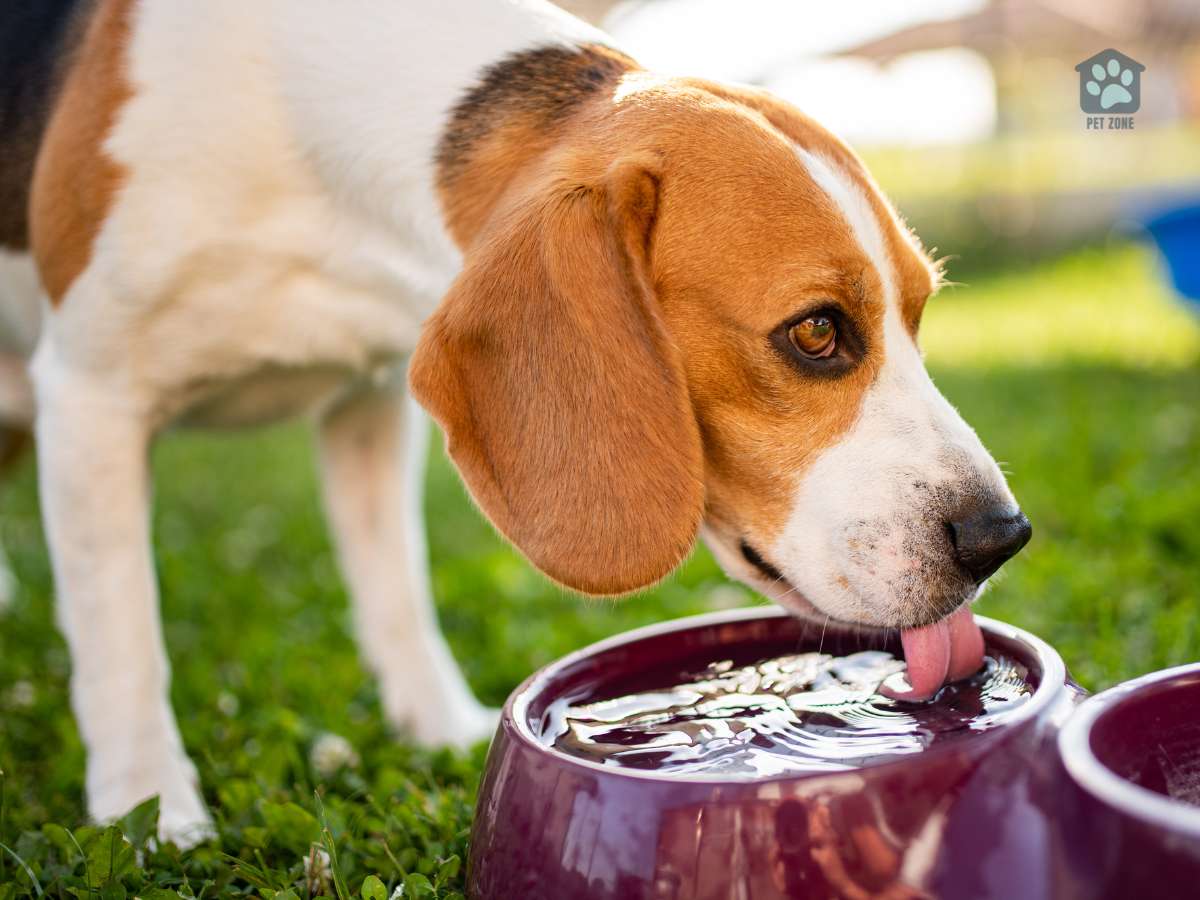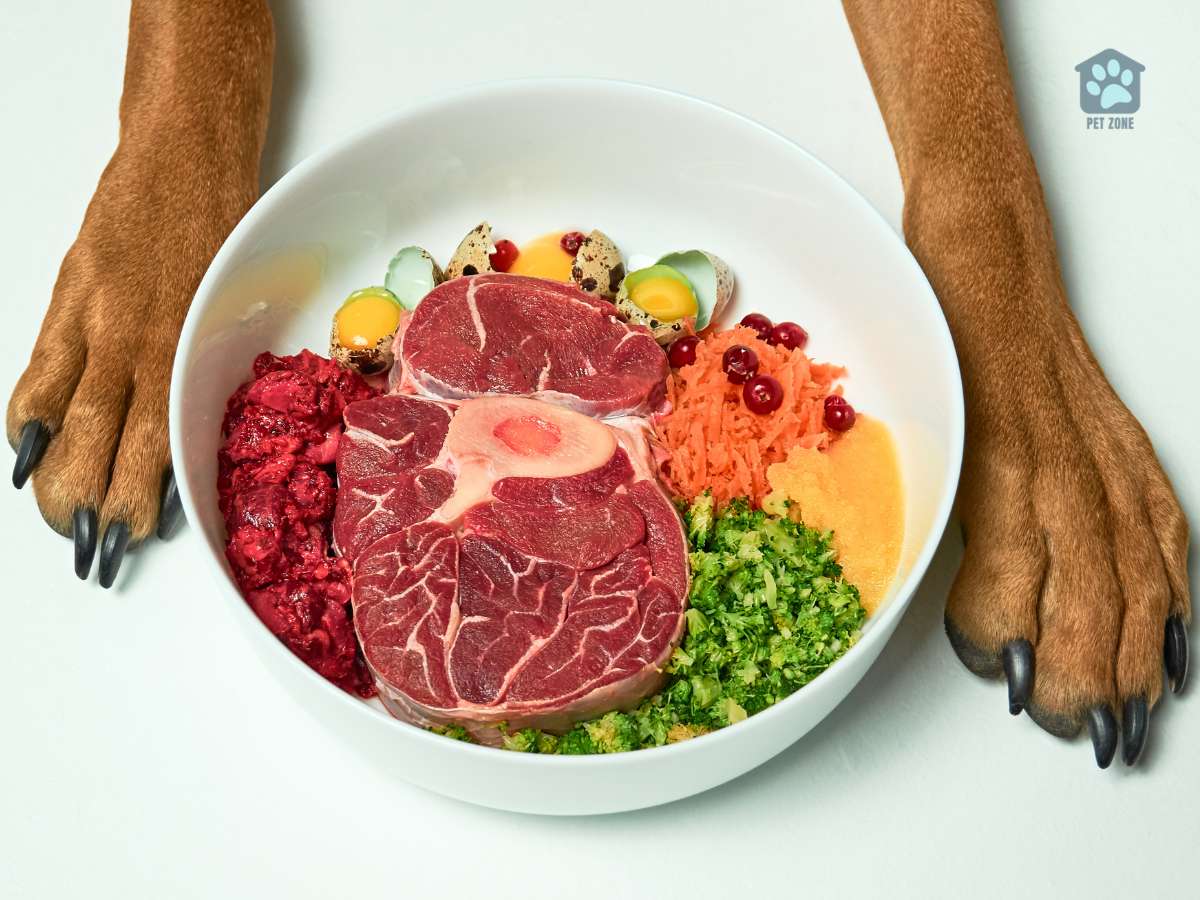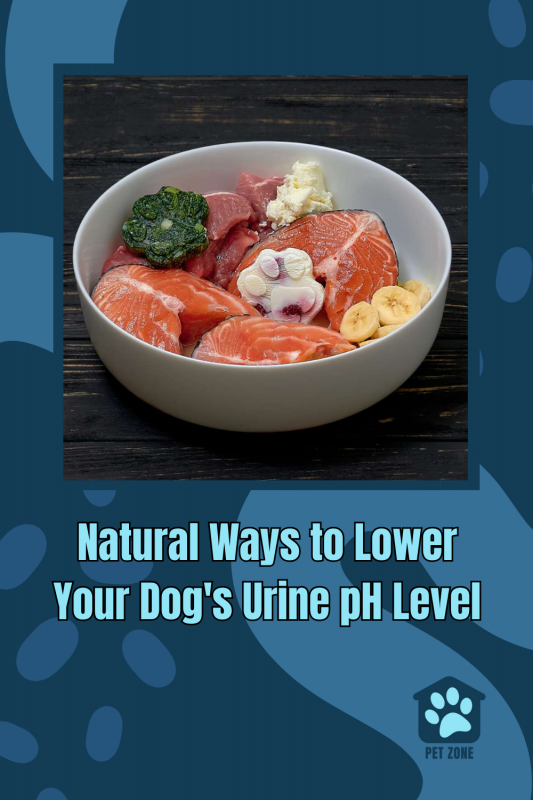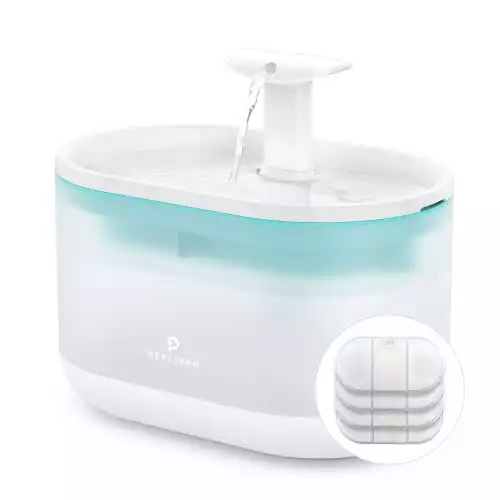Estimated reading time: 11 minutes
As a pet owner, you know that it’s important to maintain your dog’s urinary health. An imbalanced urine pH can lead to the formation of crystals, which can cause discomfort and irritation for your furry friend. Fortunately, there are natural ways to lower pH levels in your dog’s urine and promote urinary health.
Various factors can affect urine pH, including diet and urinary tract infections. Consulting with a veterinarian is crucial in diagnosing and treating any urinary issues your dog may be experiencing.
Key Takeaways:
- Keeping your dog’s urine pH balanced is crucial for maintaining urinary health.
- Diet and urinary tract infections can affect urine pH levels.
- Consulting with a veterinarian is important in diagnosing and treating urinary issues.
- Natural methods and diet modifications can help lower your dog’s urine pH level.
- Proactive measures can promote long-term urinary health for your furry friend.
Understanding Dog Urine pH Levels
Urine pH is a measure of the acidity or alkalinity of a dog’s urine. The pH scale ranges from 0-14, with 7 being neutral, below 7 acidic, and above 7 alkaline. In general, a dog’s urine pH should be slightly acidic, ranging from 6 to 6.5.
Dogs with a higher urine pH may be at risk for developing urinary tract issues, including the formation of struvite crystals. On the other hand, dogs with lower urine pH may experience discomfort and irritation due to acidic urine.
The presence of blood in the urine can also be a sign of urinary tract issues. It is essential to monitor your dog’s urine pH regularly and consult a veterinarian if you notice any abnormalities.
| Urine pH Level | Description |
|---|---|
| Below 6 | Highly acidic urine |
| 6 to 6.5 | Normal, slightly acidic urine |
| Above 7 | Alkaline urine |
It is essential to maintain balanced urine pH levels for a dog’s overall urinary health. In the next section, we will discuss the factors that can affect a dog’s urine pH and potential remedies for imbalanced urine pH levels.
Factors Affecting Dog Urine pH
Several factors can affect a dog’s urine pH, including their diet. Pet food manufacturers often formulate their products with varying levels of protein, grains, and minerals that can contribute to urine pH levels. Here are some common factors that affect dog urine pH:
| Dog Food Type | Effect on Urine pH |
|---|---|
| Prescription Diet | Prescription diets can be formulated to help regulate urine pH levels and reduce the risk of urinary tract infections (UTIs). |
| Canned Food | Canned food generally has a higher moisture content and can help dilute urine, leading to slightly acidic urine. |
| Raw Food Diet | Raw food diets can be high in protein, which can lead to more alkaline urine. However, it can also promote urine acidity due to higher water intake. |
| High Protein Diet | High protein diets can increase urine acidity, which can help prevent the formation of crystals in the urine. |
Pet owners should consult with their veterinarian to determine the best diet for their dog. It’s important for the diet to be balanced and appropriate for the dog’s age, breed, and health needs. Additionally, pet owners should ensure their dog has access to plenty of fresh water to maintain proper hydration and urine concentration.
Diet Modifications for Lowering Dog Urine pH
A balanced and nutritious diet is essential for a dog’s overall health, including their urinary system. If your furry friend is experiencing higher urine pH or has developed crystals in the urine or bladder stones, adjusting their diet can help. The following diet modifications can help lower your dog’s urine pH and maintain their urinary health.
Choose the Right Dog Food
The type of dog food you choose can have a significant impact on your dog’s urine pH levels. Dog foods that promote slightly acidic urine pH can prevent the formation of crystals and bladder stones.
Look for pet food brands that contain ingredients like meat, fish, or poultry, which are rich in animal protein and amino acids.
High-pH ingredients like oxalates, found in vegetables like spinach and beets, can contribute to higher urine pH. Therefore, it’s essential to choose foods that are low in oxalates, or avoid them altogether.
Pet foods labeled as “prescription diets” can successfully decrease urine pH levels. Such diets contain a specific blend of ingredients, including moderately fermentable fibers and animal protein sources, that promote a healthy urination process.
Include Amino Acids
Specific amino acids, such as methionine, can help reduce urine pH levels in dogs. Methionine is an essential amino acid that, when introduced into your dog’s diet, is converted into sulfuric acid. This acidification process can help prevent the formation of crystals in the urine.
However, it’s important to consult your veterinarian before incorporating methionine or any other amino acid supplement into your dog’s diet. Over-supplementing your dog’s diet with methionine can lead to an excessively acidic urine pH levels and cause other health problems.
Avoid High pH Foods
Dogs on high-protein diets can develop alkaline urine, leading to higher pH levels. It’s essential to balance your dog’s protein intake with the proper nutrients to avoid higher urine pH levels.
Additionally, grain-free diets may contain higher levels of carbohydrate substitutes, which can also contribute to the development of alkaline urine.
Foods like cheese can also impact pH levels in dogs, making the urine more alkaline. Avoid feeding your dog foods with high pH levels to maintain a healthy urinary system.
| Avoid These Foods | Eat These Foods Instead |
|---|---|
| Spinach | Protein-rich foods (meat, fish, poultry) |
| Beets | Low-oxalate vegetables (broccoli, carrots, kale) |
| Cheese | Fruits (apples, bananas, cranberries) |
Overall, maintaining a balanced diet with a focus on protein-rich foods and low-oxalate vegetables can help keep your dog’s urine pH levels in check. Always consult with a veterinarian before making any significant changes to your dog’s diet.

Promoting Urinary Health Through Lifestyle Changes
Aside from natural remedies and diet modifications, making lifestyle changes can also help promote urinary health in dogs. Here are some tips:
Consider a Raw Food Diet
A raw food diet for dogs can help maintain optimal urine pH levels. This type of diet is usually high in protein, which is beneficial for urinary health. However, it is essential to consult a veterinarian before switching to a raw food diet as it may not be appropriate for all dogs.
Increase Water Intake
Encouraging your dog to drink more water can help dilute their urine and prevent concentrated urine, which can lead to urinary tract infections (UTIs) and other urinary issues. Consider adding a pet water fountain or providing multiple water bowls around the house to encourage frequent drinking.
If you’re looking for an affordable, quiet, and easy-to-clean pet fountain, look no further!
This is the water fountain I use personally for my two cats, Zelda and Zander. They absolutely love it and they both drink from it several times every day. I feel better knowing that they are both drinking fresh water on a regular basis--especially Zander, who is a senior cat and needs to stay hydrated.
It's super affordable, easy to maintain, and almost completely silent except for the occasional trickling sound of water.
- Quadruple Filtration System
- Runs Ultra Quietly
- Easy to Set Up and Clean
Monitor Urine Concentration
Regularly monitor your dog’s urine concentration to ensure they are adequately hydrated. If their urine becomes excessively concentrated, it can lead to urinary tract problems.
Limit High Protein Diets
While a high protein diet is beneficial for urinary health, excessive protein consumption can have adverse effects. Excess protein can cause an increase in urinary urea, leading to a higher urine pH level and possible formation of struvite crystals.
Prevent Urinary Tract Infections (UTIs)
UTIs can cause problems with urine pH levels and overall urinary health. Prevent UTIs in your dog by ensuring good hygiene, avoiding irritants like harsh shampoos, and looking out for any signs of discomfort when your dog urinates.
By implementing these lifestyle changes, you can help maintain your dog’s urinary health and prevent potential issues.
When to Consult a Veterinarian
Pet owners should keep a close eye on their dog’s urinary health and consult a veterinarian if any issues arise. Some specific signs and symptoms may indicate the need for professional diagnosis and treatment.
- Struvite or Oxalate Crystals: The formation of crystals in the urine can cause discomfort and potentially lead to bladder stones. If pet owners notice crystals in their dog’s urine, they should seek veterinary advice.
- Urinary Tract Infection: Recurring urinary tract infections (UTIs) can be a sign of an underlying issue and require proper diagnosis and treatment.
- Excessively Alkaline or Acidic Urine: If a dog’s urine becomes excessively alkaline or acidic, it can lead to urinary tract issues. A veterinarian can perform a urinalysis to determine the cause and provide appropriate treatment.
It is important for pet owners to not ignore any changes in their dog’s urinary health and seek professional advice from a veterinarian. Early detection and treatment can prevent potential complications and ensure long-term urinary health.
Maintaining Balanced Urine pH for Long-Term Health
Maintaining balanced urine pH levels is crucial for long-term urinary health in dogs. Keeping a check on urine pH levels through regular urinalysis can help you ensure your dog’s well-being.
An imbalanced urine pH, whether too alkaline or too acidic, can cause problems like crystals in the urine or blood in the urine. These complications can pose greater risks to a dog’s health if they persist over time. Ensuring your dog’s diet promotes slightly acidic urine pH can go a long way in maintaining urinary health.
A diet rich in specific amino acids, such as dl-methionine, can help reduce urine pH levels and prevent the formation of crystals or bladder stones. Avoiding higher pH ingredients like oxalates is equally important for maintaining a balanced urine pH level.

Conclusion
Ensuring your dog’s urinary health is crucial for their overall well-being. Lowering urine pH levels naturally can greatly reduce the risk of urinary tract infections and the formation of crystals or bladder stones.
By understanding the factors that affect urine pH levels and implementing natural methods and diet modifications, pet owners can promote long-term urinary health in their dogs.
Consulting a veterinarian and regularly monitoring urine pH levels through urinalysis is essential for proper diagnosis and treatment. Lifestyle changes, such as a raw food diet or preventing UTIs, can also greatly benefit your dog’s urinary health.
Remember, prevention is key to maintaining optimal urinary health and avoiding potential complications. Take proactive measures and prioritize your dog’s urinary health for a happy and healthy life.
FAQ
Q: What is urine pH?
A: Urine pH refers to the measurement of the acidity or alkalinity of a dog’s urine. It helps determine the health of the urinary tract and can indicate potential issues such as urinary tract infections or the formation of crystals.
Q: Why is it important to maintain a balanced urine pH for dogs?
A: Maintaining a balanced urine pH is crucial for a dog’s overall urinary health. An imbalanced pH can lead to the development of urinary tract issues, such as the formation of crystals or blood in the urine. By keeping urine pH within the appropriate range, pet owners can help prevent these complications.
Q: What factors can affect a dog’s urine pH?
A: Several factors can influence a dog’s urine pH, including diet and the presence of urinary tract infections. The type of food a dog consumes, such as high-protein or raw food diets, can impact urine pH levels. Additionally, urinary tract infections can cause an increase in urine pH.
Q: Are there natural methods to lower a dog’s urine pH?
A: Yes, there are natural methods to lower a dog’s urine pH. These include diluting the urine by increasing water intake, encouraging frequent urination, and using supplements like dl-methionine, which can help acidify the urine. However, it is essential to consult a veterinarian before implementing any changes to ensure proper urinary health.
Q: What diet modifications can help lower a dog’s urine pH?
A: Diet modifications can play a role in lowering a dog’s urine pH. Choosing a dog food that promotes slightly acidic urine pH is important. Additionally, specific amino acids found in some pet foods can help reduce urine pH and prevent the formation of crystals or bladder stones. Pet owners should aim for balanced nutrition and avoid ingredients that increase urine pH, such as oxalates.
Q: How can lifestyle changes promote urinary health in dogs?
A: Lifestyle changes, such as feeding a raw food diet or a high-protein diet, can promote urinary health in dogs by maintaining optimal urine pH levels. Preventing urinary tract infections and ensuring proper urine concentration are also essential. Pet owners can achieve this by practicing good hygiene, providing regular opportunities for urination, and monitoring their dog’s overall well-being.
Q: When should I consult a veterinarian regarding my dog’s urine pH?
A: It is important to consult a veterinarian if you notice any signs or symptoms of urinary issues in your dog. These may include the presence of struvite or oxalate crystals, recurring urinary tract infections, or excessively alkaline or acidic urine. Seeking professional advice is crucial for the proper diagnosis and treatment of any urinary health concerns.
Q: How can I maintain a balanced urine pH for my dog’s long-term health?
A: Regular monitoring of urine pH levels through urinalysis is essential for maintaining balanced urine pH in dogs. This helps identify any imbalances and allows for timely interventions. Pet owners should also be aware of the potential complications associated with imbalanced urine pH, such as the formation of crystals or blood in the urine, and take proactive measures to promote long-term urinary health.
As an Amazon Associate I earn from qualifying purchases.










